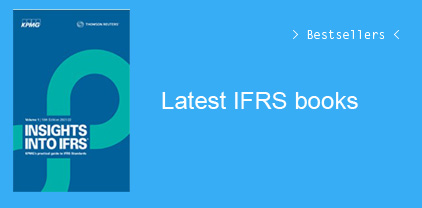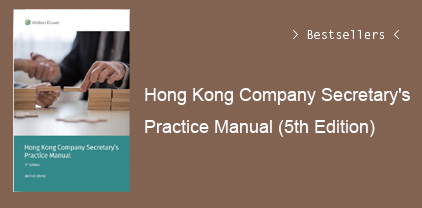Preface xiii
CHAPTER 1 Introduction to Management Accounting and Control 1
The Concepts of Management, Accounting, and Control 2
A Definition of Management 2
A Definition of Accounting 3
A Definition of Control 4
Bringing it Together: Management Accounting and Management Control 5
Management Accounting 5
Management Control 6
The Role of a Controller in an Organization 9
Skill Set of a Controller 10
The Management Control Function in a Corporation 12
Management Accounting vs. Financial Accounting 14
Financial Accounting 14
Contrasting Management Accounting and Financial Accounting 15
Performance Measurement and Performance Reporting 17
An Example of Performance Reporting 17
Performance Measurement beyond Financials 19
Trends in Management Accounting and Control 20
Ethical Aspects of Management Accounting and Control 23
CHAPTER 2 Management Reporting 29
Information Needs in Business 30
What is “Information”? 31
Information Supply vs. Information Demand 32
Management Reporting as a Key Information Tool 34
Scope and Definition of Management Reporting 35
The Management Reporting Process 36
Management Reporting Dimensions 38
“What For?” – Management Reporting Purposes 40
“What?” – Content of Management Reports 42
Inductive Methods 42
Deductive Methods 43
Information Sources 44
“How?” – Preparing and Communicating Management Reports 46
Amount of Information 46
Order and Structure 47
Relationships between Pieces of Information 49
Presentation and Visualization 50
“When?” – Timing Issues in Management Reporting 50
Reporting Cycles 50
Duration of Report Preparation 51
Timeliness and Punctuality 52
“Who?” – Parties Involved in the Management Reporting Process 53
Emerging Trends in Management Reporting 54
Reporting Factories 54
Self-Reporting 55
Cooperative Reporting 56
CHAPTER 3 Managing Cost 61
Cost Management 62
Cost Accounting vs Cost Management 62
The Focus of Cost Management 63
Cost Management Tools 65
An Overview 65
Problems of Volume-Based Cost Allocation 65
Activity-Based Costing and Process-Based Costing 67
How Activity-Based Costing Works 67
How Process-Based Costing Works 70
Activity-Based Costing and Process-Based Costing – a Comparison 71
Process- and Activity-Based Management Control 73
Cost Reduction and Process Efficiency Improvements 74
Pricing and Product Mix 74
Product and Service Design 74
Planning and Budgeting 75
Target Costing 75
Determining the Cost Gap in Target Costing 76
The Target Costing Process 77
Splitting Target Cost into its Sub-Values 79
Target Cost Index and Target Cost Diagram 81
A Critical Reflection: When is Target Costing Appropriate? 82
Life Cycle Costing 83
Cost and Revenue Elements Across the Product Life Cycle 85
Contribution Margin Method of Life Cycle Costing 86
Discounting Method of Life Cycle Costing 88
A Critical Reflection: What Life Cycle Costing Can and Cannot Do 91
CHAPTER 4 Budgeting 97
Planning in Management Control 98
The Budgeting Cycle 100
Uses of Budgets 101
The Master Budget 102
Preparing an Operating Budget 104
The Revenue Budget 105
The Production Budget 106
The Direct Materials Budget 107
The Direct Labor Budget 108
The Manufacturing Overhead Budget 108
The Manufacturing Costs Per Unit 109
The Cost of Goods Sold Budget 110
The Non-Manufacturing Costs Budgets 111
The Budgeted Income Statement 112
Discussing the Operating Budget 113
Preparing a Financial Budget 114
The Cash Budget 114
Preparation of the Cash Budget 115
The Budgeted Cash Flow Statement 118
Discussing the Cash Budget and the Budgeted Cash Flow Statement 119
Motivational Aspects of Budgeting 121
Motivation Versus Planning 122
Top-Down versus Bottom-Up Budgeting 123
Budget Manipulation 125
Strengths and Weaknesses of Traditional Budgeting 126
The Strengths of Budgets 126
The Weaknesses of Budgets 127
CHAPTER 5 Alternative Approaches to Budgeting 133
Budgeting – Necessary Evil or Valuable Management Tool? 134
Overview of Alternative Budgeting Approaches 134
Approaches Complementing Traditional Budgeting 135
Incremental Budgeting 135
Setting Up a Zero-Based Budget 138
Zero-Based Budgeting Example 139
Activity-Based Budgeting 141
Activity-Based Budgeting Example 142
Improvement Approaches to Budgeting 144
Better Budgeting 144
Continuous Improvement (“Kaizen”) Budgeting 146
Abolishing Budgets – The Beyond Budgeting Approach 147
CHAPTER 6 Performance Measurement – Financial
Statements 153
The Importance of Performance Measurement 154
Measuring Financial Performance 156
Sources of Financial Information 156
The Balance Sheet 157
Five Major Elements of the Balance Sheet 158
Non-current Assets 159
Current Assets 162
Non-Current Liabilities 162
Current Liabilities 163
Owners’ Equity 163
Market Values Versus Book Values 163
Important Balance Sheet Concepts 164
Total Assets 164
Financial Debt 165
Identifying Financial Debt 166
Net Debt 167
Net Working Capital 170
Capital Employed 172
The Income Statement 173
The Multi-Step Profit Cascade 176
Earnings Before Taxes (EBT) 177
Earnings Before Interest and Taxes (EBIT) 178
Earnings Before Interest, Taxes, Depreciation, and Amortization (EBITDA) 179
The Statement of Cash Flows 180
Preparing a Statement of Cash Flows 182
Sources and Uses of Cash 182
Determining Cash Flow with the Indirect Method 183
Cash Flows from Operating Activities 184
Cash Flows from Investing Activities 186
Cash Flows from Financing Activities 187
Analyzing the Statement of Cash Flows 189
Change in Net Working Capital 191
CHAPTER 7 Performance Measurement –
Key Performance Indicators 199
Performance Indicators 200
A Note of Caution 202
Financial Ratios 203
Profitability Ratios 205
Profit Margin 205
EBIT Margin (Return on Sales) 207
Gross Profit Margin 207
Return on Investment Ratios 208
Return on Equity (ROE) 209
Return on Assets (ROA) 209
Return on Capital Employed (ROCE) 210
A Note on the Time Dimension 211
Asset Management Ratios 213
Total Asset Turnover 213
Fixed Asset Turnover 214
Inventory Turnover 215
Days’ Sales in Inventory (DSI) 215
Days Receivables Outstanding (DRO) 216
Days Payables Outstanding (DPO) 217
Cash Conversion Cycle 217
Days Working Capital (DWC) 218
A Comparison 220
Capital Structure and Financial Leverage Ratios 222
Total Debt Ratio 222
Debt-to-Equity Ratio 224
Equity Multiplier 224
Interest Coverage and EBITDA-to-interest Ratio 224
Net Debt-to-EBITDA 225
Financial Leverage 228
Calculating the Leverage Effect 230
Liquidity Ratios 231
Current Ratio 232
Quick Ratio 232
Cash Ratio 233
Systems of Performance Measures 233
The DuPont System 234
Non-Financial Performance Measures 237
Typical Performance Measures in Logistics 237
Delivery Reliability 237
Supply Chain Cycle Time 238
Replacement Time 238
Typical Performance Measures in Human Resource Management 238
Employee Satisfaction 239
Absenteeism Rate 239
Staff Fluctuation Rate 239
Typical Performance Measures in Manufacturing 240
Productivity 240
Capacity Utilization 240
Reject Rate 241
Throughput Time 241
Typical Performance Measures in Marketing 241
Customer Churn Rate 241
Click Through Rate (CTR) 242
Price Elasticity of Demand 242
Using Performance Measures in Business 243
Time Trend Analysis 243
Peer Group Analysis (Benchmarking) 244
A Benchmarking Example 245
Problems of Benchmarking 247
Major Criticism of Key Performance Indicators 247
CHAPTER 8 Value-Based Performance Measurement 257
The Goal of a Business Firm 258
Shareholder Value as the Overall Goal 260
A Justification of Shareholder Value 261
Shareholders vs Stakeholders 263
Shortcomings of Traditional Performance Measures 264
Measuring the Creation of Shareholder Value 265
Residual Income 266
Economic Value Added (EVA) 267
The EVA Formulas 267
Net Operating Profit After Taxes (NOPAT) 269
Capital Employed (CE) 269
Return on Capital Employed (ROCE) 271
Weighted Average Cost of Capital (WACC) 271
Cost of Equity 272
A Numerical Example of Calculating EVA 274
EVA Adjustments 277
Using EVA as a Superior Performance Measure 278
Three Competing Metrics 278
The Underinvestment Problem of ROCE 279
Ways to Increase EVA – The Value Driver Tree 282
Portfolio Management Decisions with EVA 286
Criticism of EVA 289
Alternative Value Concepts 290
Economic Profit 290
Cash Value Added 291
Market Value Added 293
Value-Based Management Systems 294
CHAPTER 9 Strategic Management Accounting
and the Balanced Scorecard 303
Strategic vs Operating Management Accounting 304
Phases in the Strategic Management Process and the Role of the Controller 307
Finding and Formulating a Strategy 307
Implementing a Strategy 308
Corporate-Level Strategies vs Business-Unit Level Strategies 309
Corporate-Level Strategies 310
Business-Unit Level Strategies 311
Selected Instruments of Strategic Management Accounting 312
External vs Internal Factors 312
Environmental Analysis 313
Industry Analysis – Porter’s Five-Forces Model 315
Generic Strategies 317
Value Chain Analysis 318
Product Life Cycle Analysis 319
BCG’s Portfolio Matrix 321
SWOT Analysis 323
The Balanced Scorecard 326
Genesis of the Balanced Scorecard 327
Key Characteristics of the Balanced Scorecard 328
Structure of a Balanced Scorecard 329
Financial Perspective 331
Customer Perspective 332
Internal Business Process Perspective 332
Learning and Growth Perspective (Innovation and Learning) 334
Cause-and-Effect Links 335
The Strategy Map 335
Features of a Balanced Scorecard 337
Developing a Balanced Scorecard 339
Step 1: Formulate the Strategy and Clarify the Strategic
Objectives Along the Perspectives 339
Step 2: Set up the Strategy Map 340
Step 3: Define Measures for the Strategic Objectives 341
Step 4: Define Initiatives and Responsibilities for Each Objective 341
Step 5: Feedback and Continuous Improvement 342
The Balanced Scorecard as a Strategic Management System 342
Application in Corporate Practice 345
Criticism of the Balanced Scorecard 347
CHAPTER 10 New Developments in Management
Accounting and Control 355
Hot Issues and Future Challenges in Management Accounting 356
Management Accounting in Networks and Supply Chains 357
Management Accounting for Quality – Six Sigma 359
The Role of Management Control in Six Sigma 361
Six Sigma in Practice 362
Integrating Human Behavior into Management Accounting 363
Environmental Management Accounting 366
Integrated Reporting 368
Integrating Financial and Management Reporting 370
The Integrated Reporting (IR) Framework 371
Management Accounting and Control with Big Data 372
The Role of the Controller in Big Data 374
A Critical View on Big Data 375
Bibliography 381
Index 387
































